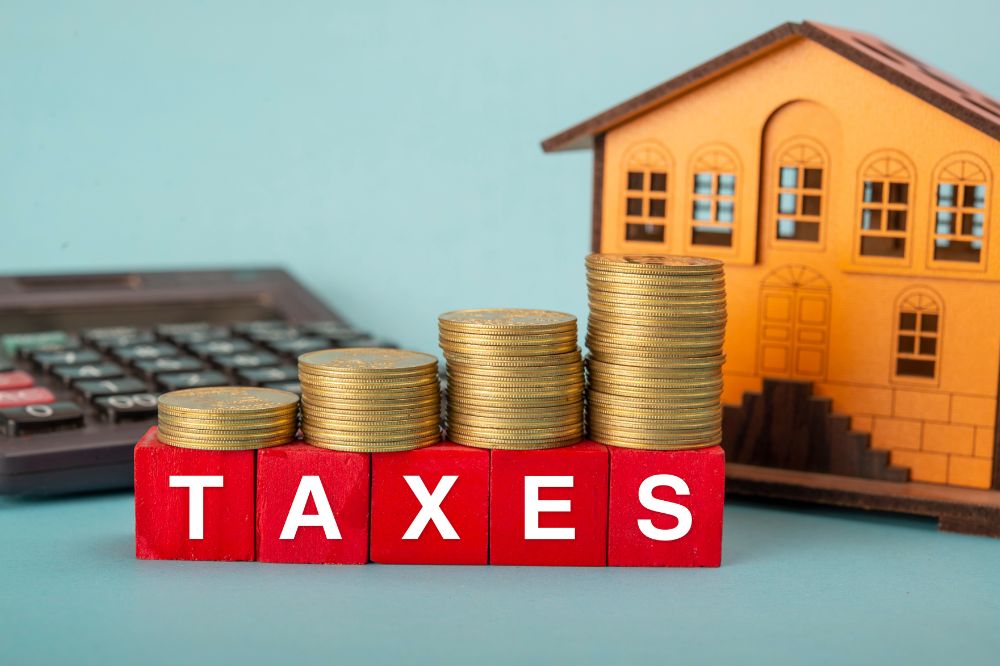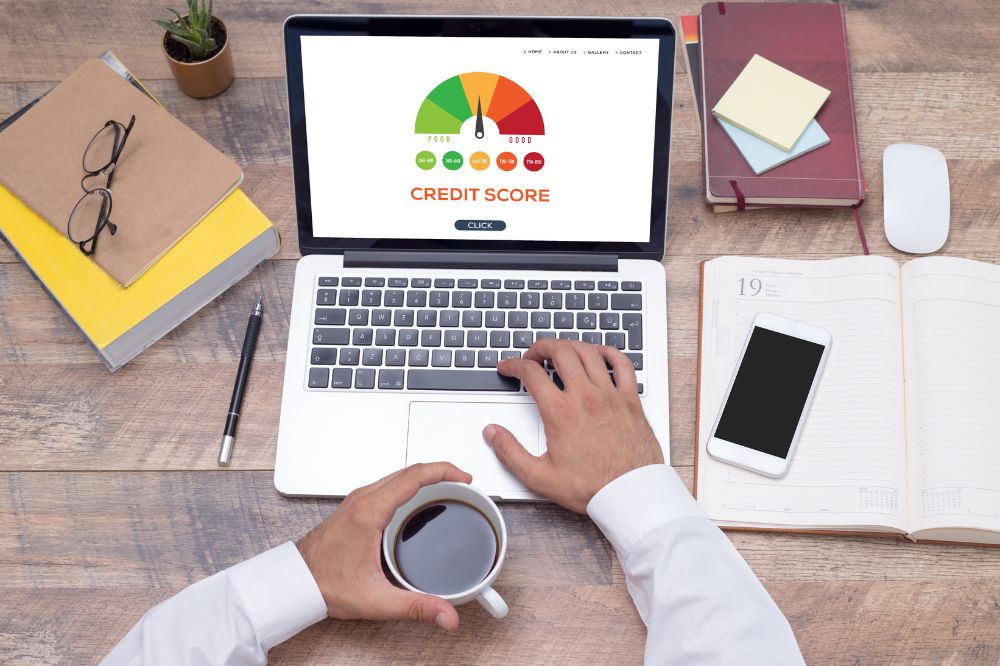Understanding the effects of insolvency on personal and business taxes is crucial for financial planning. Insolvency can impact tax obligations, leading to potential consequences for individuals and businesses alike. By exploring how insolvency influences tax liabilities, one can navigate the complexities of tax laws more effectively. Historical context reveals the evolving nature of tax regulations in response to economic challenges, emphasizing the importance of staying informed about insolvency’s implications on taxes. Stay tuned to uncover insights into managing taxes amidst insolvency scenarios.
Key Takeaways
- Communication is Key: Establish open and honest communication with the IRS to navigate tax implications effectively.
- Separate Personal and Business Finances: Understand how insolvency can impact personal and business taxes differently.
- Maximize Tax Refunds: Explore the potential for tax refunds during bankruptcy proceedings to alleviate financial burdens.
- Plan Ahead: Engage in post-bankruptcy tax planning to ensure a smoother financial recovery process.
- Bust Misconceptions: Address common misconceptions surrounding insolvency and tax implications for a clearer understanding.
- Utilize Resources: Take advantage of additional resources to gain insights and support in managing taxes during and after insolvency.
Understanding Bankruptcy
Basics Explained
Insolvency refers to the inability to pay debts when they are due, affecting both personal and business taxes. Key differences exist between personal and business insolvency, impacting tax obligations differently.
When facing insolvency, individuals and businesses must understand how it influences their tax liabilities. Learning about these effects is crucial for navigating the financial challenges posed by insolvency.
Distinguishing between personal and business insolvency is essential as each has unique implications on tax responsibilities.
Types Available
Exploring various insolvency options such as Chapter 7 and Chapter 13 bankruptcy is crucial when dealing with financial distress. Understanding the variances between these options helps in making informed decisions.
Chapter 7 bankruptcy involves liquidating assets to repay debts, while Chapter 13 allows for a repayment plan over time. Debt restructuring serves as an alternative to bankruptcy, offering a chance to renegotiate payment terms with creditors.
Bankruptcy Process
The process of filing for bankruptcy involves several steps that individuals or businesses must follow diligently. Understanding this process is vital to ensure a smooth transition through the legal proceedings.
Bankruptcy trustees play a significant role in overseeing the case, ensuring compliance with regulations and facilitating communication between debtors and creditors. The automatic stay provision halts creditor actions against debtors upon filing for bankruptcy.
IRS Involvement
The Internal Revenue Service (IRS) plays a crucial role in insolvency cases, particularly concerning tax matters. Knowing how the IRS is involved can help individuals and businesses navigate tax issues during insolvency.
Insolvency can impact tax audits, leading to closer scrutiny of financial records by the IRS. Understanding IRS debt forgiveness programs is essential for those seeking relief from tax liabilities during insolvency.
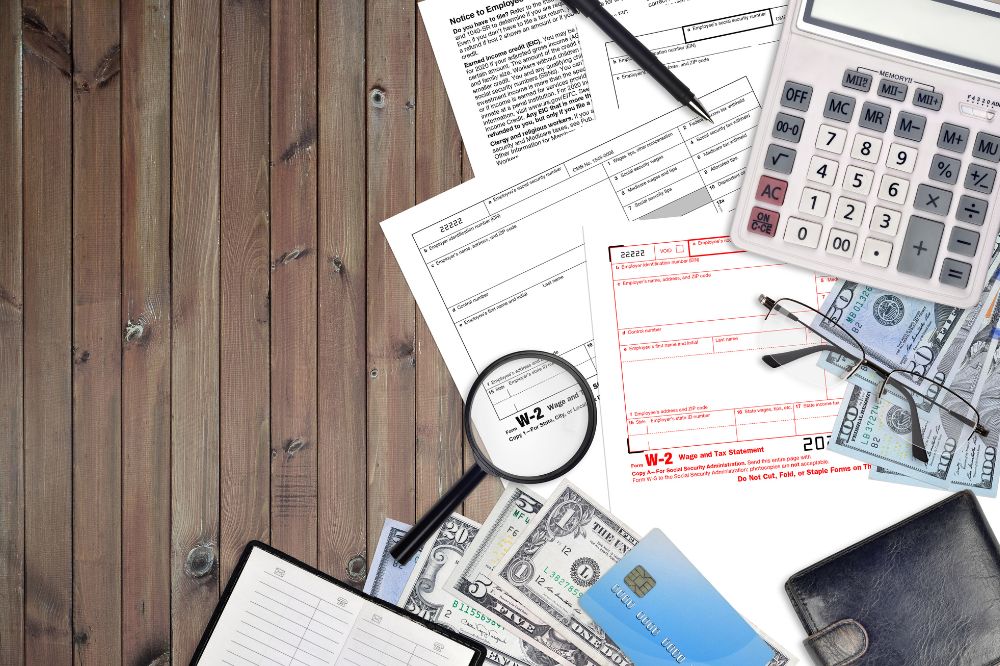
Communicating with the IRS
Filing Notification
Notifying the IRS about insolvency is crucial for both personal and business taxes. Failure to inform them can lead to severe consequences. It is essential to follow the correct procedures when filing this notification.
Understanding the importance of notifying the IRS ensures that they are aware of your financial situation. By informing them, you can avoid potential penalties and legal issues. Properly filing this notification showcases transparency and cooperation.
Failing to notify the IRS about insolvency can result in additional fines and complications. It is vital to adhere to the necessary steps promptly. Ignoring this obligation may escalate into more significant tax problems in the future.
Refund Information
During insolvency, refunds play a significant role in managing taxes. Understanding how refunds are handled is crucial for individuals and businesses facing financial difficulties. The timing of refund disbursement varies based on specific circumstances.
Refunds during insolvency are processed differently than regular tax situations. Knowing when to expect these refunds can help in planning finances effectively. However, it’s essential to understand that refunds may impact any outstanding tax debts that need to be settled.
Case Number Issues
Case numbers are pivotal in insolvency proceedings, serving as unique identifiers for each case. Understanding their significance helps individuals navigate through the complex process efficiently. These numbers are assigned systematically by relevant authorities.
In insolvency cases, knowing your assigned case number is vital for tracking progress and communicating with involved parties. You can find your case number information on official documents related to your insolvency proceedings. Keeping track of this number streamlines interactions with the IRS and other entities involved.
Impact on Personal Taxes
Tax Debts Discharge
Understanding the process of discharging tax debts through insolvency is crucial for individuals facing financial challenges. By filing for bankruptcy, individuals can potentially eliminate certain tax debts, providing a fresh start financially. However, it’s essential to meet specific criteria for tax debt discharge eligibility.
The criteria typically include factors such as the type of tax owed, the timing of the tax return filing, and whether the taxes were assessed at least 240 days before filing for bankruptcy. Meeting these criteria is vital to ensure that tax debts are included in the bankruptcy discharge. Moreover, it’s important to consider the implications of tax debt discharge on future tax obligations.
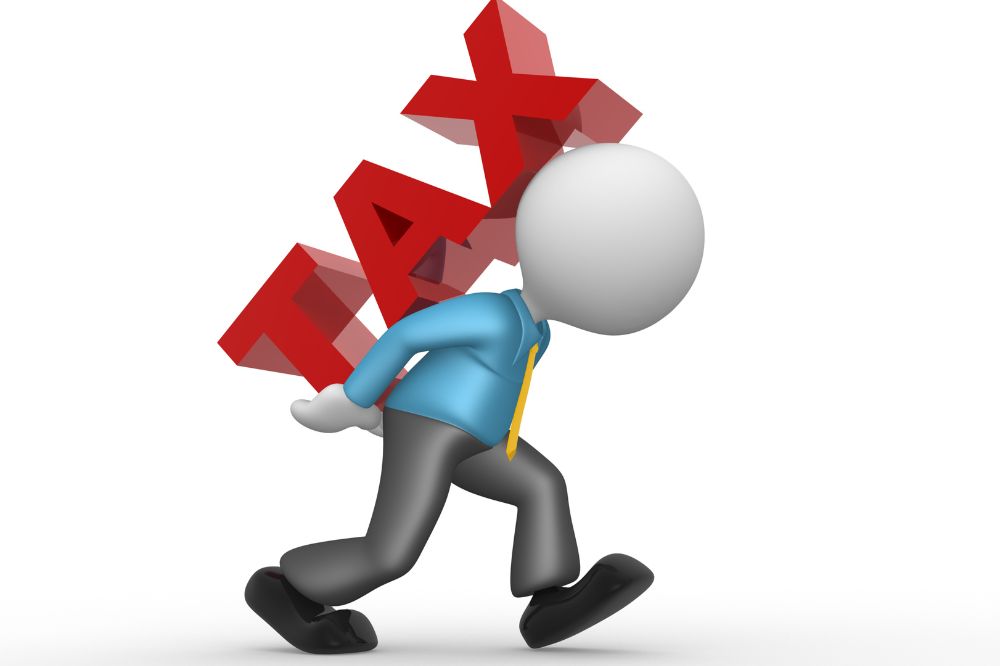
Future Refunds
Insolvency can have a significant impact on future tax refunds, affecting how they are handled post-bankruptcy. In cases where an individual has outstanding debts, future tax refunds may be allocated towards these debts to fulfill financial obligations. This allocation ensures that any potential refunds contribute towards resolving existing financial liabilities.
Understanding the rights and limitations regarding future refunds is essential for individuals navigating insolvency proceedings. While individuals may still be entitled to receive refunds under specific circumstances, it’s crucial to be aware of how these refunds may be utilized to address outstanding debts incurred prior to bankruptcy.
Filing Requirements
Individuals undergoing insolvency proceedings must adhere to specific filing requirements for their tax returns during this period. It is essential to accurately report all income and assets while ensuring compliance with tax regulations post-bankruptcy. Understanding the documentation needed for filing taxes after bankruptcy is crucial to prevent any discrepancies or legal issues.
Moreover, being aware of the deadlines for filing tax returns after insolvency is vital to avoid penalties or further complications. Timely submission of required documents and meeting all necessary deadlines can help individuals effectively navigate their tax responsibilities following bankruptcy proceedings.
Impact on Business Taxes
Business Debt Relief
Business owners facing financial challenges have various options for debt relief, including debt restructuring and negotiation.
Understanding the implications of business insolvency is crucial to navigate tax obligations effectively.
Debt restructuring strategies such as renegotiating payment terms can help businesses manage their financial burdens.
Tax Obligations After Bankruptcy
After bankruptcy, businesses still have ongoing tax obligations that must be fulfilled to maintain financial stability.
Fulfilling tax responsibilities is essential to avoid further financial turmoil post-insolvency.
Neglecting tax obligations after insolvency can lead to severe consequences, impacting the business’s recovery process.
Operating After Filing
Navigating tax obligations while operating a business post-insolvency requires careful planning and adherence to tax laws.
Insolvency can significantly impact business operations, affecting cash flow and profitability.
Implementing best practices for managing taxes after filing for bankruptcy is crucial for the business’s long-term success.
Tax Refunds in Bankruptcy
Personal Refunds
Personal tax refunds during insolvency undergo specific procedures to ensure fair treatment for all parties involved. Understanding these processes is crucial for individuals navigating bankruptcy. Factors like the timing of the bankruptcy filing can influence eligibility for personal tax refunds. It’s essential to be aware of these nuances to make informed decisions.
When it comes to claiming personal tax refunds post-bankruptcy, individuals must follow strict guidelines. The process involves detailed documentation and adherence to legal requirements. Failing to comply with these procedures can lead to delays or even denial of the refund. Seeking professional advice can streamline this process and ensure a smoother experience.
Business Refunds
In cases of business insolvency, managing tax refunds becomes more intricate due to the involvement of multiple stakeholders. Navigating through the complexities of claiming business tax refunds post-bankruptcy requires a deep understanding of tax laws and regulations. Businesses must prioritize resolving any outstanding debts before pursuing tax refunds.
Claiming business tax refunds after bankruptcy can have significant implications on the financial health of the company. These funds can potentially offset existing debts, providing a much-needed financial boost. However, businesses must carefully weigh the pros and cons of pursuing these refunds, considering their overall financial situation and obligations.
Post-Bankruptcy Tax Planning
Personal Tax Strategy
Creating a personal tax strategy after bankruptcy is crucial for individuals to navigate financial difficulties. By implementing effective tax planning, individuals can optimize their financial outcomes and minimize tax liabilities. Understanding the nuances of tax planning post-insolvency is essential for long-term financial stability.
Key considerations for personal tax optimization include assessing available deductions, credits, and exemptions. Leveraging these opportunities can significantly reduce tax burdens for individuals facing insolvency. Exploring options such as installment agreements with the IRS can help manage tax payments effectively.
Implementing a comprehensive personal tax strategy involves collaborating with financial advisors or tax professionals. These experts can provide valuable insights into maximizing tax benefits and ensuring compliance with relevant regulations. By proactively engaging in tax planning, individuals can secure their financial future and alleviate the impact of insolvency.
Business Tax Strategy
Exploring tax planning strategies for businesses post-bankruptcy is vital for facilitating recovery and sustainable growth. Businesses undergoing insolvency can leverage various tax-saving opportunities to optimize their financial position and enhance profitability. Implementing a well-structured tax strategy is critical for navigating the complexities of business taxation.
Understanding the role of tax strategy in business recovery is essential for organizations seeking to rebuild after bankruptcy. By strategically managing taxes, businesses can improve cash flow, reinvest in operations, and foster long-term success. Exploring deductions, credits, and incentives specific to post-bankruptcy scenarios can lead to significant cost savings.
Businesses in financial distress can benefit from exploring tax-saving opportunities such as carryback provisions and net operating loss deductions. These strategies enable businesses to offset previous losses against current income, reducing taxable amounts and enhancing overall financial viability. Collaborating with experienced tax advisors can help businesses identify tailored solutions for optimizing their tax positions.
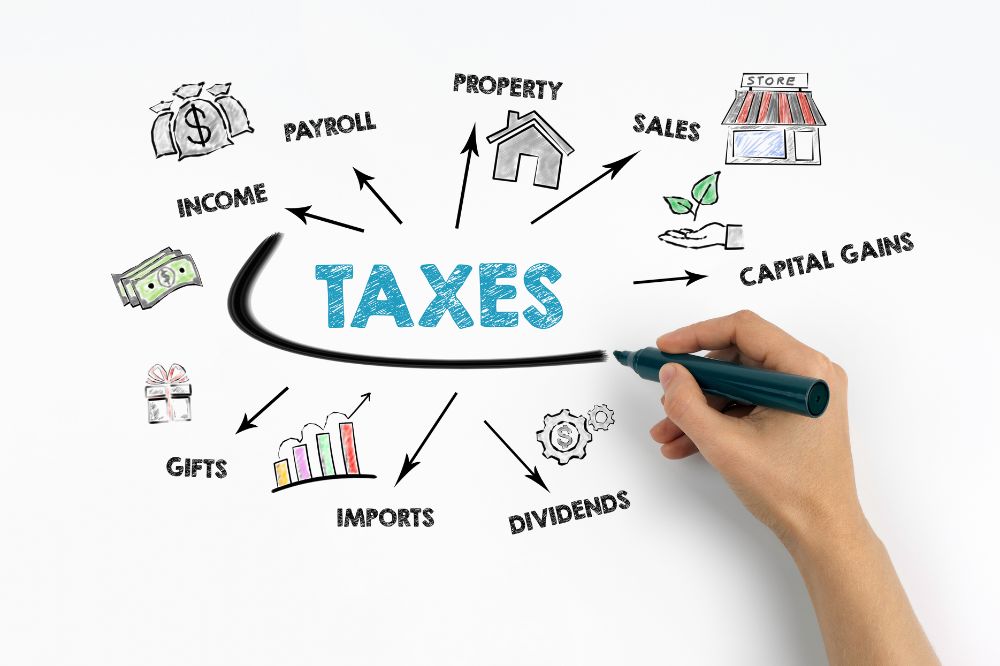
Common Misconceptions
Bankruptcy Myths
Debunk the idea that bankruptcy erases all tax debts automatically without any consequences. Understand that some tax debts may survive bankruptcy, depending on various factors. Educate yourself on the importance of distinguishing between dischargeable and non-dischargeable tax debts.
Contrary to popular belief, filing for bankruptcy does not mean you can evade all tax responsibilities. It is crucial to recognize that certain types of taxes, such as recent income taxes or payroll taxes, may not be dischargeable through bankruptcy. By understanding these nuances, individuals can make informed decisions about managing their tax liabilities post-insolvency.
Tax Relief Myths
Bust the myth that tax relief programs offer blanket forgiveness for all tax debts after insolvency. Understand that tax relief options vary based on individual circumstances and the type of taxes owed. Learn how to navigate through the complexities of different tax relief programs.
Many individuals mistakenly believe that tax relief programs provide complete forgiveness for all tax debts following bankruptcy. However, it is essential to realize that eligibility requirements and the extent of relief offered differ among various programs. By dispelling these myths, individuals can explore suitable tax relief avenues tailored to their specific financial situations.
Additional Resources
Related Topics
When exploring the effects of insolvency on personal and business taxes, it’s crucial to delve into related topics. Understanding extensions for tax filings during insolvency can provide relief. Partnerships may face limitations in tax deductions post-insolvency, impacting financial strategies.
To support recovery during insolvency, learning about complementary financial strategies is essential. Discovering resources that offer in-depth insights into the connection between insolvency and taxes can aid individuals and businesses in navigating these challenges effectively.
Informative Videos
Accessing informative videos on insolvency and tax concepts can enhance one’s understanding of complex financial matters. Visualizing the processes involved in bankruptcy proceedings and the resulting tax implications through video content offers a more engaging learning experience. By watching such videos, individuals can grasp the intricate details of how insolvency affects personal and business taxes.
Case Studies and Examples
Personal Bankruptcy Cases
Personal bankruptcy cases offer valuable insights into the impact of insolvency on individuals’ financial situations. Exploring these scenarios can provide a deeper understanding of the consequences of facing overwhelming debt. For example, a situation where an individual declares bankruptcy due to medical bills highlights the crippling effects of unexpected expenses.
Understanding the real-life implications of personal insolvency is crucial for individuals navigating financial difficulties. By examining case studies, individuals can grasp the challenges and opportunities that come with declaring bankruptcy. A successful personal bankruptcy case can serve as an inspiration for those seeking a fresh start financially.
Learning from successful personal bankruptcy cases sheds light on the potential outcomes of insolvency proceedings. By analyzing how individuals have managed to overcome financial crises through bankruptcy, others can gain hope and guidance in their own struggles. These examples demonstrate that there is a way out of debt traps through strategic decision-making and legal processes.
Business Bankruptcy Cases
Business bankruptcy cases present unique challenges and opportunities for companies facing financial distress. Delving into these scenarios provides valuable insights into the complexities of managing insolvency within a corporate setting. For instance, studying a business’s journey through bankruptcy can reveal crucial lessons in financial management and restructuring.
Understanding the challenges posed by business insolvency cases is essential for entrepreneurs and business owners. By examining practical examples of businesses struggling with bankruptcy, stakeholders can identify common pitfalls to avoid in similar situations. These case studies highlight the importance of proactive financial planning and risk management in sustaining business operations.
Learning from practical examples of businesses navigating bankruptcy offers valuable lessons in resilience and adaptation. Successful turnaround stories showcase how strategic decision-making and effective restructuring efforts can lead to business recovery post-insolvency. By analyzing these examples, entrepreneurs can glean insights into best practices for overcoming financial setbacks.
Closing Thoughts
You’ve now gained a comprehensive understanding of how insolvency can impact both personal and business taxes. By communicating effectively with the IRS, navigating tax refunds in bankruptcy, and planning post-bankruptcy taxes wisely, you can mitigate the repercussions of insolvency. Remember that misconceptions exist, so educate yourself to make informed decisions. Explore the additional resources provided for further insights and real-life examples to guide you through this complex process.
Take action today by implementing the strategies discussed to protect your financial well-being amidst insolvency challenges. Stay informed, seek professional advice when needed, and proactively manage your tax obligations to secure a stable financial future for yourself or your business.
Frequently Asked Questions
What are the key differences between personal and business taxes in insolvency?
In insolvency, personal taxes are linked to individual liabilities, while business taxes relate to the company’s financial obligations. Understanding these distinctions is crucial when navigating insolvency proceedings.
How does bankruptcy affect tax refunds?
Bankruptcy can impact tax refunds differently based on whether they are related to personal or business taxes. In some cases, tax refunds may be used to repay creditors during bankruptcy proceedings.
Is post-bankruptcy tax planning necessary?
Yes, post-bankruptcy tax planning is essential to ensure compliance with tax laws and optimize your financial situation. Seeking professional advice can help you make informed decisions and prevent future tax issues.
Can misconceptions about taxes in bankruptcy lead to costly mistakes?
Misconceptions about taxes in bankruptcy can indeed result in costly errors. It’s vital to clarify any misunderstandings and seek accurate information from reputable sources or professionals to avoid potential financial setbacks.
How can communication with the IRS impact insolvency proceedings?
Effective communication with the IRS is critical during insolvency as it can influence how your tax obligations are managed. Maintaining transparency and addressing any tax-related concerns promptly can help streamline the process.

